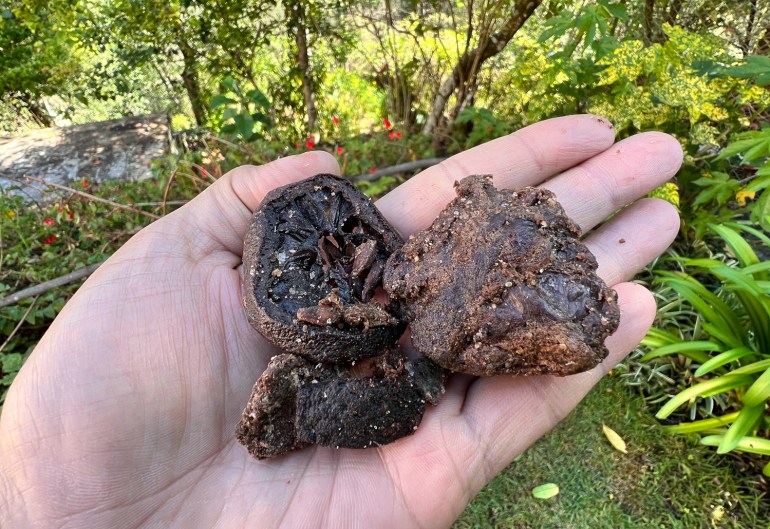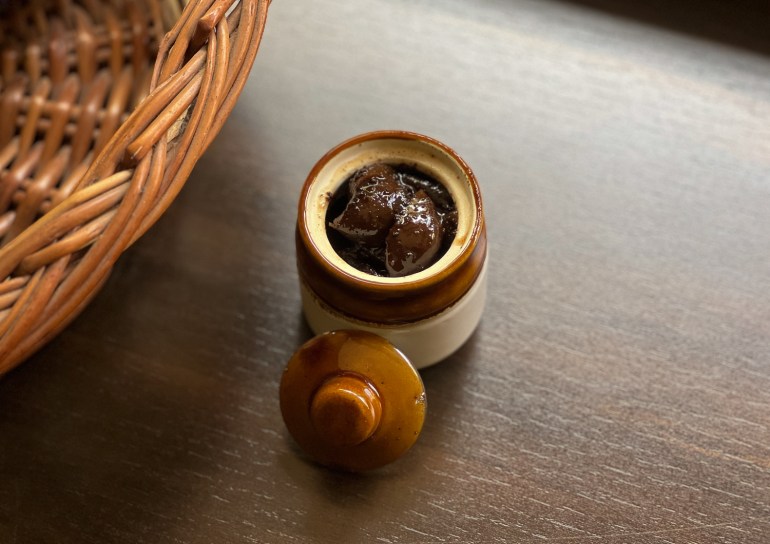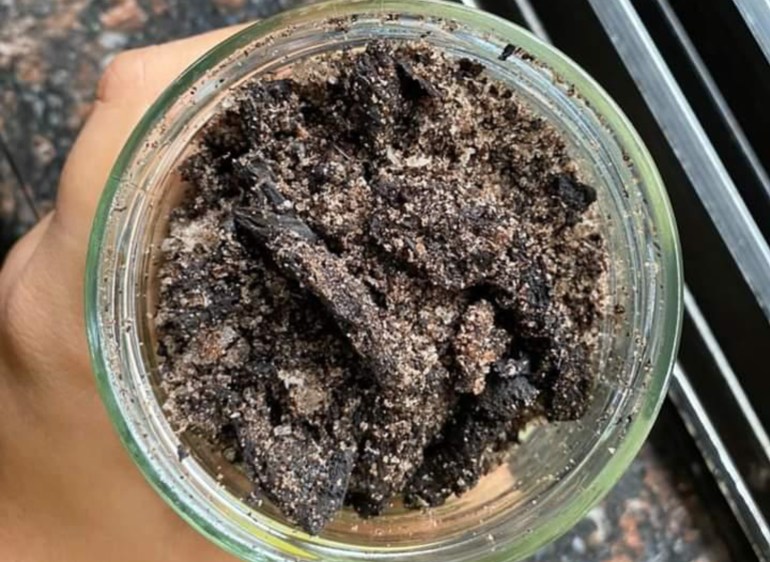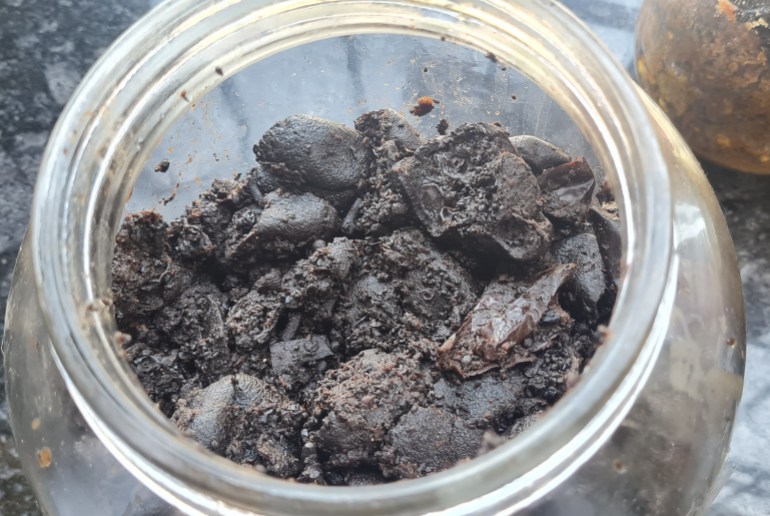India’s pickle people: Decades-old culinary heirlooms, nostalgia
“My 30-year-old lemon pickle is salty. How can I fix it?” Renu Jain asked on a Facebook food group, bringing my scrolling to a grinding halt.
A 30-year-old pickle.
A pickle fiend myself, I was intrigued and browsed more than 300 comments on Renu’s post. Half were people as amazed as I was while the other half offered tips on fixing the pickle’s salt levels, saying they were common in their households.
“My 86-year-old father remembers having pickles that were 15-20 years old,” one said.
“I have a 20-year-old lemon pickle my mother-in-law gave me,” another said. So many pickles, 10 to 50 years old, eaten sparingly to conserve them for their medicinal properties.
These aged pickles can accompany meals, be eaten on their own or with a little sugar to cut the saltiness, mixed into breads like parathas or diluted with buttermilk.
Pickles, in general, are an integral part of the Indian culinary landscape. Each community (and there are many) in the 28 states and eight union territories pickles local, seasonal produce.
Spices and techniques vary. Some use simple saltwater brine. Others marinate, sun-dry, and/or immerse in lots of oil – sesame or mustard oils being most common. Bottles of homemade pickles are packed in suitcases for travelling family members, as a spicy condiment when travelling or as gifts from the family pickle-maker to whomever.

For most Indians, buying commercially produced pickles is frowned upon. A lack of time to make pickles from scratch and a lack of space to sun-dry or store them have led to the rise of commercial pickle-making, but there are always a couple of bottles of homemade pickles in most homes.
And, as I was finding out, some are decades old.
How do they last so long?
“For a pickle to last years, it has to be dry,” said Krish Ashok, author of Masala Lab: The Science of Indian Cooking.
“People figured out that to preserve anything, first, all water needs to be removed. Here’s where sun-drying or dehydration comes in. They also found salty environments to be hostile to bacteria and fungi, and acids help kill microbes. Vinegar is an example. … Similar is citric acid, naturally occurring in citrus fruits like lemon,” he added.
The last technique, he explained, is reducing oxygen to prevent oxidation, and that is where oil comes in. Pickled raw mango submerged in oil lasts a few years, although not decades, because the oil will go rancid.

The lemon lends itself to long-term ageing more than any other. The simplest way to make a lemon pickle is to wash, dry, slice and toss the fruit with salt in proportion to its weight followed by sun-drying and mixing with additional ingredients before being bottled. Those ingredients, which vary from recipe to recipe, can include sugar, powdered jaggery, chili powder, asafoetida, carom, turmeric, cloves and more.
Aged lemon pickles are often hailed for their healing powers and are strongly believed to have probiotic properties. Fifty-one-year-old Rummy Nagpal says these start to develop after three to four years of maturing, making the pickle an age-old remedy for a bad stomach, coughs, colds, fevers and other ailments.
The ingredients in lemon pickles have their own healing properties. Citrus has vitamin C. Carom (also known as omum) is taken for diarrhoea and acidity. Rock salt eases constipation and bloating. In some regions, cloves or asafoetida are added, both remedies for vomiting and other stomach upsets.
Probiotic pickles are a common myth, Krish said. “Probiotic means the presence of microbes. For a pickle to survive decades, it has to have zero microbes. When you pickle in salt or acids, all bacteria is killed,” he explained, adding that such pickles can be called postbiotic.

“In the early days of the pickling process, the fruit releases water. Some bacteria would have colonised, broken down naturally and produced some beneficial probiotic compounds. Once the water is gone and added salt has killed all the bacteria, some of the useful things produced remain, though with time, this postbiotic value would decrease,” he said.
Heirloom recipe
“I was inspired to make lemon pickle and preserve it as an heirloom, thanks to a classmate who would bring a 50-year-old pickle in her lunch box when I was in school in the late 1970s,” said Renu Jain, who I connected with on social media after her intriguing post.
“[Her] grandmother even had a 100-year-old pickle she kept under lock and key in a special pickle room,” she continued.
The 56-year-old teacher and entrepreneur used a recipe from her paternal aunt to make 20kg (44lb) of her 30-year-old pickle, and now has only about 5kg (11lb) in glass bottles in the kitchen attic.
Jayalakshmi Gopalakrishnan, 80, has a narthangai (Tamil for citron) pickle in her refrigerator that she got from her mother when she left her hometown of Chennai to move to Mumbai in 1970 as a young bride. To this day, she said, she can still see the family lemon tree behind their house.

“It was most likely around 20 years old by the time I was given it, making the 150 grammes [5.3oz] that remain today over 70 years old,” Jayalakshmi said.
The pickle is completely black, as aged lemon pickles tend to become, and was made by simply sun-drying salted sliced lemons.
Creating your own heirloom
In Rummy’s home in Mumbai, another lemon pickle is ageing away, waiting for a chance to be served at her daughter’s future wedding celebration.
Rummy has been making and selling heritage and new-age pickles under her brand name Herbs n Spices for 20 years, but this pickle, she said, has a story behind it.
Before their daughter was born, her husband shared a childhood memory with her of going to a wedding in Jalandar, Punjab, where the guests were served a traditional kala nimbu achar (black lemon pickle) that had been in the family for years.
It came with the family from what is now Pakistan during the 1947 partition, carried the whole way in a bharani (ceramic pickle pot). The guests loved it.
Wanting something similar, Rummy’s husband asked her to make and store such a pickle. It sits today in a jar on a corner shelf in her kitchen, neatly labelled “27 years”. Inside is a dark, slightly glazed black pickle, the lemon halves looking a bit grainy.

Rummy also has a 10-year-old lemon pickle, immersed in its own juices, on its way to blackening. She makes black lemon pickle for a wider audience too, ageing it at least four years before she packages it for sale.
“No one makes aged pickles any more. Around 35 years ago, they were common, but now, the lack of time, space and several other factors have led to a decline in their making. Customers who buy my black lemon pickle speak of their childhood memories of it and how its taste transports them back in time,” Rummy said.
Black magic
But why do pickles turn black? Salt and dehydration prevent oxidation and denaturation, among other reactions. “However, some compounds are going to break down with time no matter what. This happens to a category of antioxidants or phenolic molecules that lend colour to food,” explained Krish, referring to anthocyanins that make fruits and vegetables red, blue or purple; carotenoids that give us red, yellow and orange; and chlorophyll, which produces green.
“In any pickling process, these colour molecules will break down over time, and everything will turn a uniform colour of dark brown, then black, because oxidation is impossible to avoid. This is similar to sliced potatoes turning black. … It’s the same process, just over years,” he said.
With each passing year, these aged pickles also gather nostalgia.

“My paternal grandmother’s legacy lives on in the khatta-meeta nimbu achar [salty-sweet lemon pickle] she made a month before she passed away in September 2001,” said Vernika Awal, a food writer based in the Delhi National Capital Region who has only 250 grammes (8.8oz) left in a 1kg (2.2lb) bottle that is now 22 years old.
From what Vernika recalls of the process, her Punjabi family uses lemons with a slightly hard peel. They are mixed with ajwain, khand (powdered jaggery), black salt and table salt. Mustard oil, heated to smoking point, is added. The mix is then put out in the sun.
“We eat this sparingly … and through it recall the memory my grandmother, feeling her presence even after two decades. … It’s a physical form of memory, savouring something made so long ago,” she added.
In his summer home in the southern hill station of Kodaikanal, Rakesh Raghunathan, food historian, celebrity chef and television host, has a 33-year-old bottle of narthangai pickle the family fondly calls thatha oorga (Tamil for grandfather pickle).
“My paternal grandmother made this around 1989-1990 in Chennai and the bottle was taken to Kodaikanal. Since we only stayed for a short time there each year, it was used sparingly. My grandfather … loved to have his thayir sadam [curd rice] with a bit of this pickle; that’s how the name came about,” Rakesh said.
In India, pickles are more than just a condiment.
They are unique, flavourful heirlooms, and the art of making them needs to be kept alive.
They are a sign of love when served, a soothing balm for the homesick, a burst of flavour for those unwell and a memory of someone long gone.

